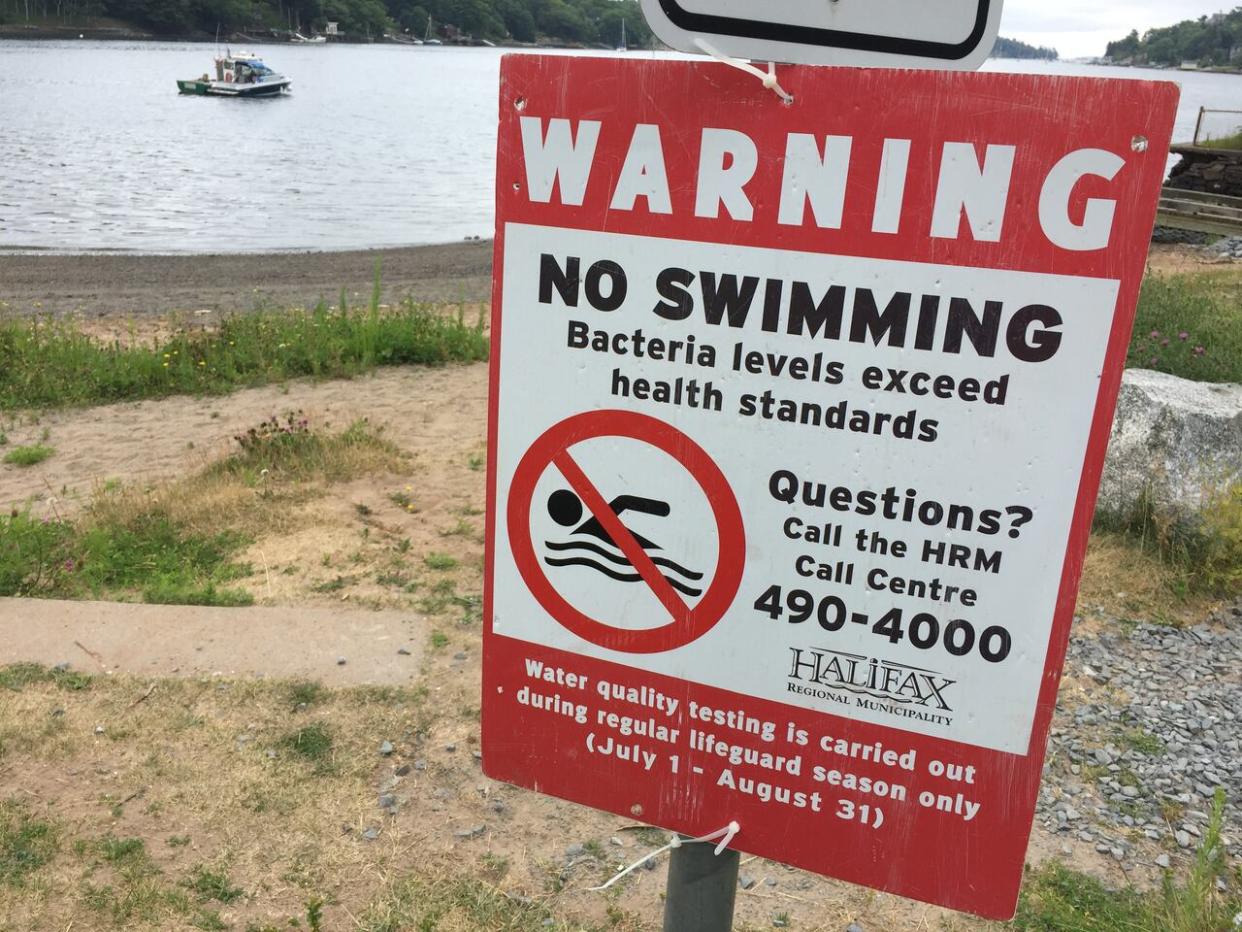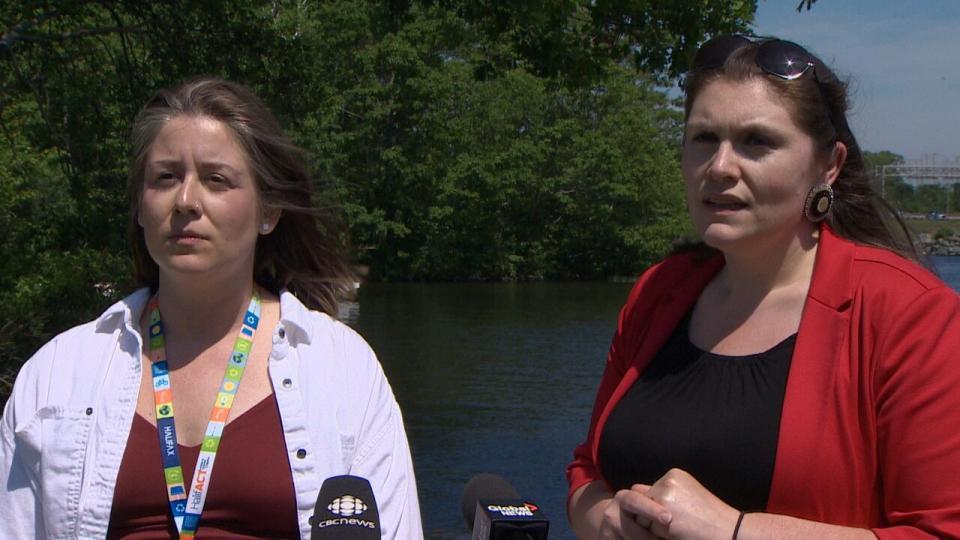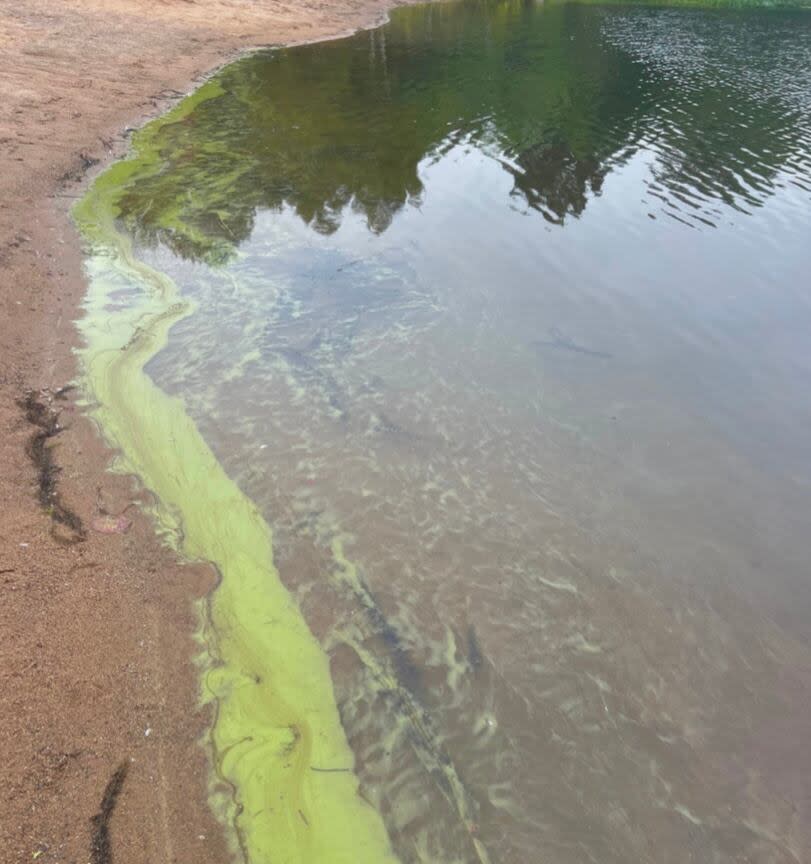Why you might see more water quality advisories at HRM beaches this summer

If you frequent any of Halifax Regional Municipality's supervised beaches this summer, you might notice more water quality advisories than you did last year, but that's not necessarily because of a dramatic increase in bacteria levels.
That's because for the first time in about a decade, Health Canada has changed its guidance on what's considered an acceptable amount of bacteria in the water.
Under the old guidelines, the maximum acceptable concentration of E. coli in a water sample was 200 colony-forming units, but now it's been lowered to 126. A colony is a group of bacteria.

Elizabeth Montgomery is HRM's water resources specialist, and Emma Wattie is the manager of environment. (Patrick Callaghan/CBC)
"Last year, we estimated if these guidelines had been applied, we would have closed HRM beaches an additional 17 times with no differences in the water quality results," said Elizabeth Montgomery, the city's water resources specialist.
HRM supervises 19 municipal beaches every day from July 1 to Aug. 31. The water at these beaches is tested for E. coli and blue-green algae on a weekly basis.
Should the concentration of bacteria exceed Health Canada's new guidelines, HRM will issue a water quality advisory, as opposed to closing the beach altogether, Montgomery told reporters Friday.
Signs advising people to swim at their own risk will be posted at the beach, and officials will update HRM's website and social media pages.
Lifeguards will still monitor the beaches, but they won't be considered "on duty."
They will be present to advise of the bacteria and recommend people avoid swimming, but the lifeguards will be under no obligation to conduct rescues should someone ignore the warning signs and need assistance in the water.
"It's their workplace, so we need to make sure that they are safe," said Montgomery. "The decisions that folks make may affect the lifeguards, so if we aren't sure they'll encounter a safe workplace when they get into the water, we have to protect them."
Blue-green algae
City staff also want the public to be aware of two different types of blue-green algae: blooms and mats.
Blooms are free-floating in the water and can be bright blue, green, brown or yellow. They are most often found in warm, calm, shallow waters.
Mats grow along the bottom of a lake, pond or stream and can be bright green while they grow, but turn brown or grey as they die.

An example of living benthic mat material below the surface. ( Jamieson Lab, 2022)

Blue-green algae bloom along the shore of Cunard Pond in 2023. (Halifax Regional Municipality)
While both blooms and mats can produce toxins, all dog fatalities attributed to blue-green algae in HRM were because the dog ate materials from the mats.
Montgomery said research on the mats remains limited, but they are highly toxic if consumed.
She advised that people should check the shoreline before swimming, and if their pet or child puts something in their mouth that appears to be material from one of these mats, they should seek emergency medical attention immediately.
It's also important to know that there are different types of blue-green algae, some of which do not produce toxins, particularly when it comes to the blooms.
"Yes, we can identify with our eyes that it's likely a blue-green algae bloom, but we can't identify with our naked eyes that it's a toxin-producing bloom, so that's why we go to the lab to identify it," said Emma Wattie, the city's environment manager.
Montgomery and Wattie explained that if you think you see something that resembles blue-green algae at a beach in HRM, report it to a lifeguard or call 311.
HRM is working on an information campaign so beach-goers can have a better idea of what to watch out for.
MORE TOP STORIES


